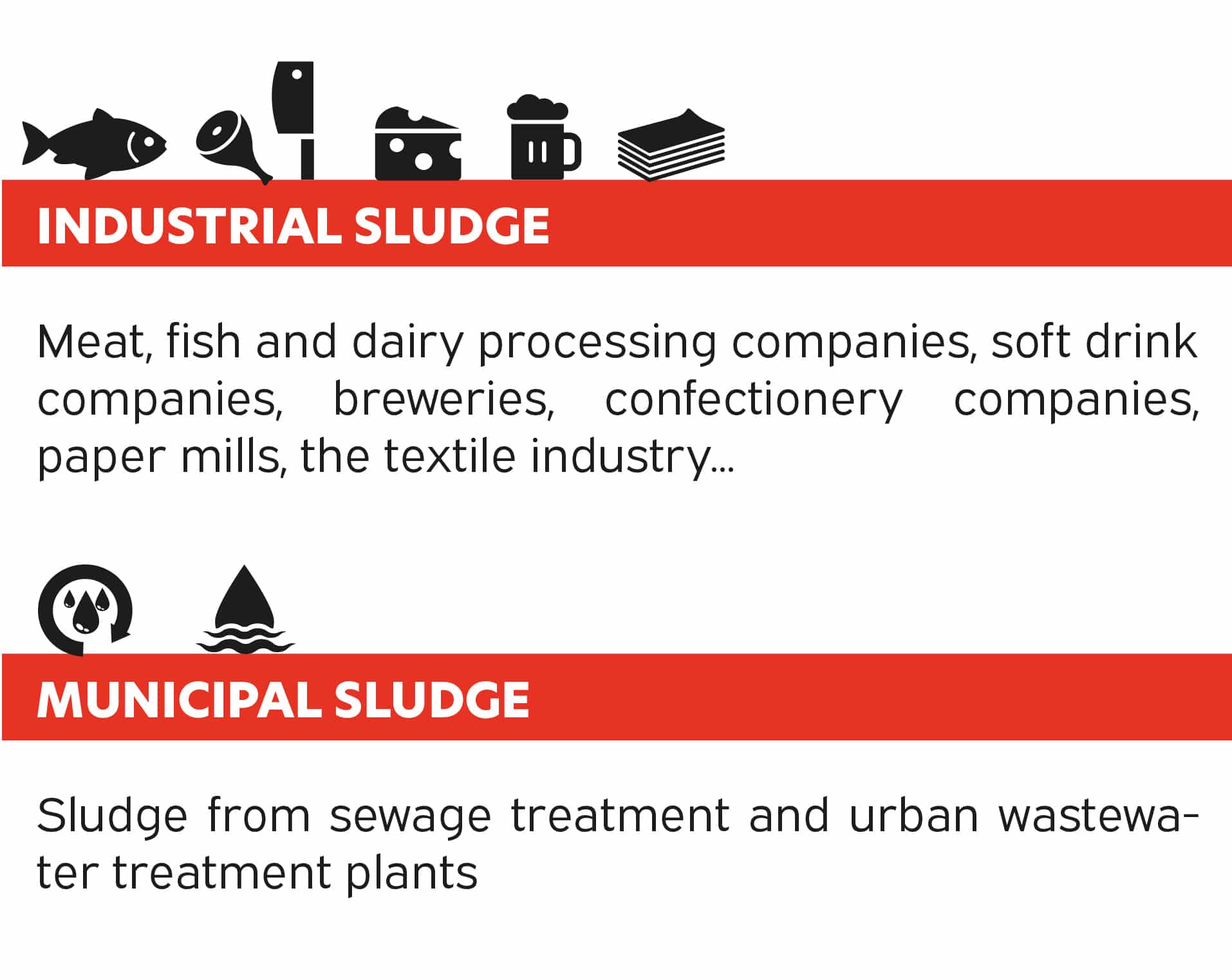Biogas from sludge
Public and private companies are increasingly committed to adopting sustainable solutions for the treatment of sludge produced at the civil and industrial level. Through careful management and purification treatment, it is possible to transform the sludge into a resource for the plants, as well as a valid example of circular economy.

How a sewage sludge plant works
Thanks to the treatment of sludge in anaerobic digestion in the CSTR reactor, SEBIGAS guarantees its recovery with a view to sustainability and the creation of a virtuous circle.
The sludge treatment process can be divided into 4 specific stages:
- THICKENING: increasing the amount of dry matter in the sludge, reducing its original volume;
- BIOLOGICAL STABILISATION: mineralising putrescible organic substances and eliminating bacteria;
- DEWATERING: removing most of the water and reducing the sludge to about 18-22% dry matter, by use of techniques such as centrifugation, belt presses, filter presses, etc;
- DRYING: further removal of water from the sludge by the use of thermal energy.
.
The types of sludge that can be treated in anaerobic digestion are divided into two main categories:
- PRIMARY SLUDGE: derived from the process of primary sedimentation. With a biogas yield of about 300-400 Nm³/tODS), this type has good methane potential and is readily digestible
- SECONDARY SLUDGE: this derives from the sedimentation produced through processes of biological oxidation. As digestion takes places through an aerobic process, this sludge is less efficient in terms of biogas production (200-300 Nm³/tODS).

What are the environmental advantages of a sludge plant?
Treating sludge in the anaerobic digestion process is essential to recover its methane potential and enhance it energetically. Self-consumption of renewable energy in production processes allows to reduce greenhouse gas emissions from the process, as well as reduce energy dependence on fossil fuels.
Being digester and the purification system two complementary processes that integrate perfectly, they improve the stabilization of the sludge and its odor impact. A technological solution that also guarantees the reduction of the bacterial load in the sludge and the volumes of sludge dispatched to disposal at the end of the process.

Economic advantages
The easy integration of existing purification systems with the digester makes the installation a cost-effective process. Using the energy produced from the anaerobic digestion of sewage sludge means managing a waste in a sustainable way, turning it into a source of income or a tool to reduce operating costs.
